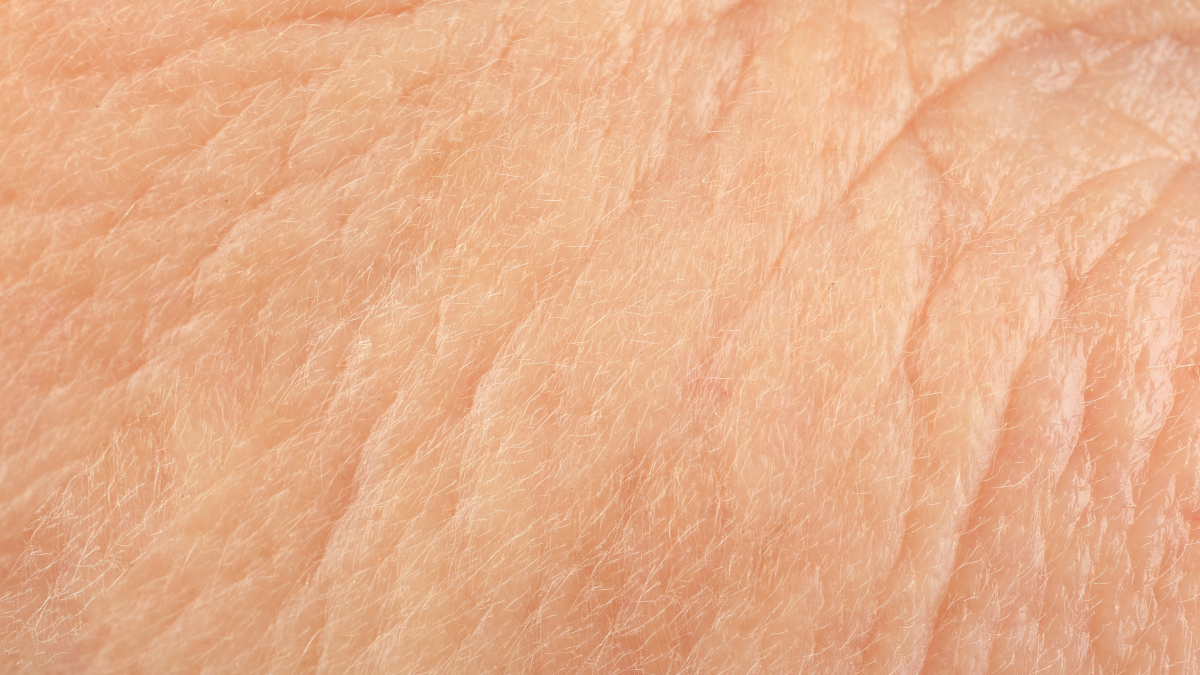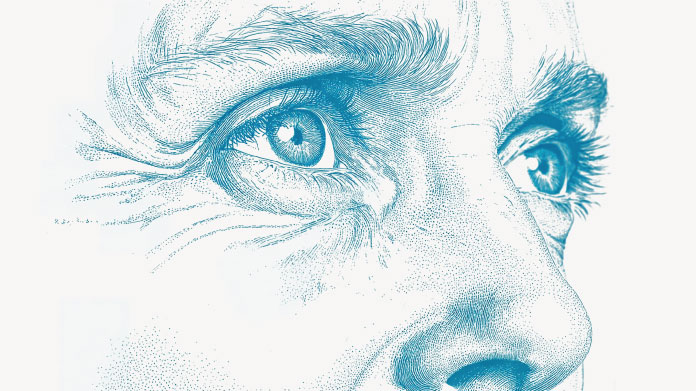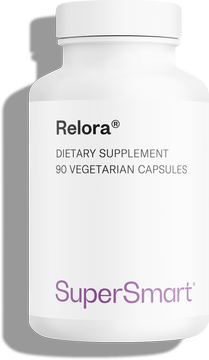Anti-aging proteins: what are they?
A number of proteins and amino acids are being studied for their potential effects on human longevity. Here we take a look at 3 key anti-aging proteins and the various ways they can be used to help ‘hold back time’.

Collagen, crucial for maintaining youthful skin
The skin is composed primarily of water, as well as elastin and collagen, two proteins that help maintain its elasticity and resistance.
Unfortunately, production of these two proteins declines with age, leading to the appearance of fine lines and wrinkles, especially in areas of the body exposed to sunlight. By the age of 60, the skin has lost more than a third of its total collagen, synthesis having decreased by 1.5% a year from the age of 25.
To reduce these visible effects of aging, one solution is to stimulate endogenous collagen production. You can, for example, increase your vitamin C intake (the liposomal version has excellent bioavailability) as it plays a key role in collagen formation. Many people also choose to consume collagen directly (via meat broths or collagen supplements, for example) to provide the body with the components necessary for its production (see Marine Collagen).
However, aging is not the only factor responsible for falling collagen levels, so here are three tips to help you maintain your ‘collagen capital’:
- don’t smoke. Second only to repeated UV exposure, smoking is a major accelerator of skin aging. Over the long term, it leads to increased activation of collagenase, the enzyme that breaks down collagen;
- limit prolonged exposure to the sun, especially in summer when the UV index is high. It’s a delicate balancing act though, as exposure to the sun’s rays also enables the body to produce essential vitamin D;
- Focus on reducing your sources of stress, a sworn enemy of collagen, through frequent use of massage (it stimulates collagen production).
Carnosine as a potential inhibitor of glycation
The breakdown of proteins including collagen is another mechanism of aging (1). Over time, proteins in the body increasingly fall victim to a process called glycation. In becoming ‘glycated’, they lose their function, and in some cases, accumulate in the body, negatively affecting how functional cells, organs, and indeed our entire bodies, work. Those most affected include albumin, insulin, hemoglobin, immunoglobulins, lipoproteins, and of course ... collagen.
Among the potential inhibitors of this process is carnosine, a dipeptide (a potential ‘piece’ of protein) that the body produces itself. The problem is that levels of carnosine in the body also decline as we get older. Past the age of 70, muscle concentrations of carnosine fall by more than 60%, which partly explains the loss of muscle associated with aging. That’s why carnosine (see the supplement Carnosine) is sometimes considered to be an ‘anti-aging protein.
There are other potential ways of reducing the glycation process over the long term:
- Drink small amounts of water throughout the day, even when you’re not thirsty. Drinking water is important for reducing glycation.
- Keep your skin well-hydrated, with the aid of water-based moisturizing gels.
- Eat a healthy, balanced diet, avoiding refined sugars (glycation is a chemical reaction involving sugar).
Sirtuins to boost DNA repair and slow down aging
There’s a whole family of proteins, known as ‘youth proteins’, called sirtuins.. They act on several cellular mechanisms associated with aging such as DNA repair, resistance to oxidative stress, and combatting inflammation. But once again, their levels decline with age. And since we can’t supplement with sirtuins, we have to rely on two compounds, which according to several studies, are likely to activate their production: NAD, an essential coenzyme present in cells (2-3) and AMPK, a protein kinase, another worthy holder of the title ‘anti-aging protein’.
Concerning NAD, supplementation is ineffective as the compound is broken down in the gut (4). But that doesn’t happen to its precursors, nicotinamide riboside (NR) and nicotinamide mononucleotide (NMN), both of which are considered to be potential ‘anti-aging’ substances for this very reason. The same goes for AMPK: we need to use compounds that activate its internal production and can get past the intestinal barrier. The formulation AMPK Booster from SuperSmart contains compounds of this sort: berberine, fisetin and gypenosides.
Tips for boosting sirtuin production:
- Increase your intake of tryptophan (found in wholegrain rice, dairy products, eggs, soy protein, peanuts, pulses, nuts) to support NAD synthesis;
- make sure you consume raw, unprocessed vegetable products which can contain NAD precursors;
- gradually increase your level of moderate, regular exercise as it stimulates production of both NAD and AMPK;
- Reduce the number of calories you consume (calorie restriction) throughout life, though we accept this is probably the hardest measure to apply.
SuperSmart ADVICE
##TPL_ARTICLES:#0734,0600,0257,0632,0674,0681,0441#
References
- Ghodsi R, Kheirouri S. Carnosine and advanced glycation end products: a systematic review. Amino Acids. 2018 Sep;50(9):1177-1186. doi: 10.1007/s00726-018-2592-9. Epub 2018 Jun 1. PMID: 29858687.
- Hall et al., 2013 J.A. Hall, J.E. Dominy, Y. Lee, P. Puigserver, The sirtuin family’s role in aging and age-associated pathologies J. Clin. Invest., 123 (2013), pp. 973-979
- Haigis and Sinclair, 2010 M.C. Haigis, D.A. SinclairMammalian sirtuins: biological insights and disease relevance Annu. Rev. Pathol., 5 (2010), pp. 253-295
- Gross and Henderson, 1983, C.J. Gross, L.M. Henderson, Digestion and absorption of NAD by the small intestine of the rat J. Nutr., 113 (1983), pp. 412-420
Keywords
20 Hours
On time shipping
On time shipping
GEORGE Verne
2 Days
Ordering was easy and the product was…
Ordering was easy and the product was delivered with no problems. Appreciated that I was notified when it would arrive. Thanks!
MascarC
8 Days
Great customer service - responsive …
I ordered from them and my item was unavailable for sometime. I was super happy when they reactivated my order and shipped my item which arrived very quickly. Great customer service.
Ruth Rueter
9 Days
Super fast shipping
Super fast shipping
Donald Borling
12 Days
Reputable companysearch and the number of…
The research and the number of selection of products.
NAKHJAVAN Shervin
25 Days
The Anti Aromatase is a great product
The Anti Aromatase is a great product. You just need to have constant inventory. Recently this product has been out of stock.
GEORGE Verne
26 Days
Great help on chat
Great help on chat. Knowledgeable and friendly.
Jason Argos
30 Days
Customer service was fast and friendly.
Customer service helped to stop the transaction process of the subscription. I appreciated that.
Greenie
30 Days
I order here due to the high quality of…
I order here due to the high quality of the products and the quick delivery of items - thank you
Barbara J
31 Days
SuperSmart's Eye Pressure supplements: highly recommended!
I purchase SuperSmart's Eye Pressure supplements regularly for over 5 years, and gotta say they are truly a wonderful product for my Glaucoma. Highly recommended if you have eye pain from your Glaucoma.
D. Martinez
36 Days
Quick service
Quick service
MONELL
37 Days
Speedy service.
Speedy service.
ROSENTHAL Marvin
40 Days
Clear website- Efficient
Clear website. Excellent search engine and fast delivery!
Mohamad Hussein
43 Days
They have great products.
They have great products.
Vickie
43 Days
Great Shipping Time!
You Have A Great Shipping Time! Praise The Lord!
DMHoge





